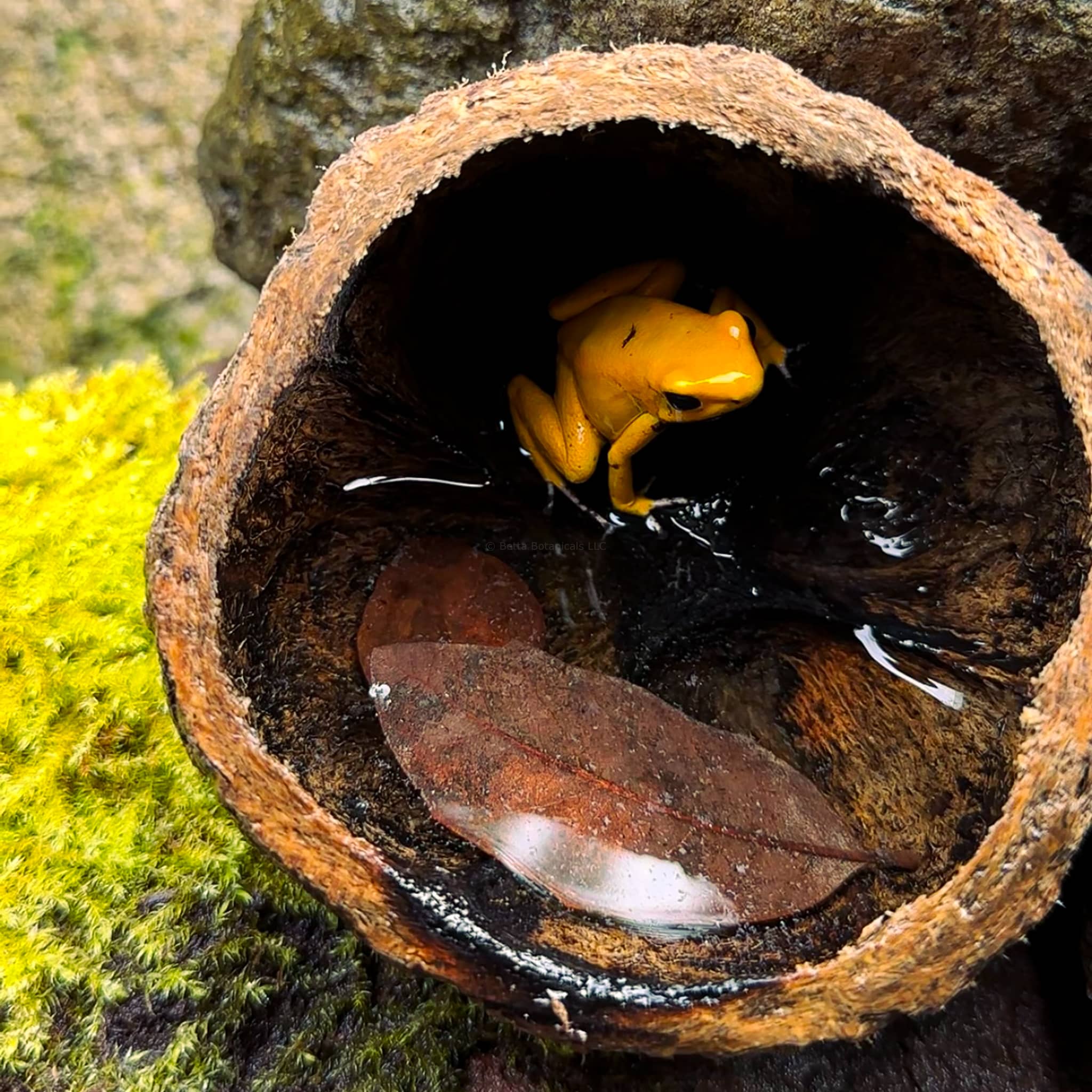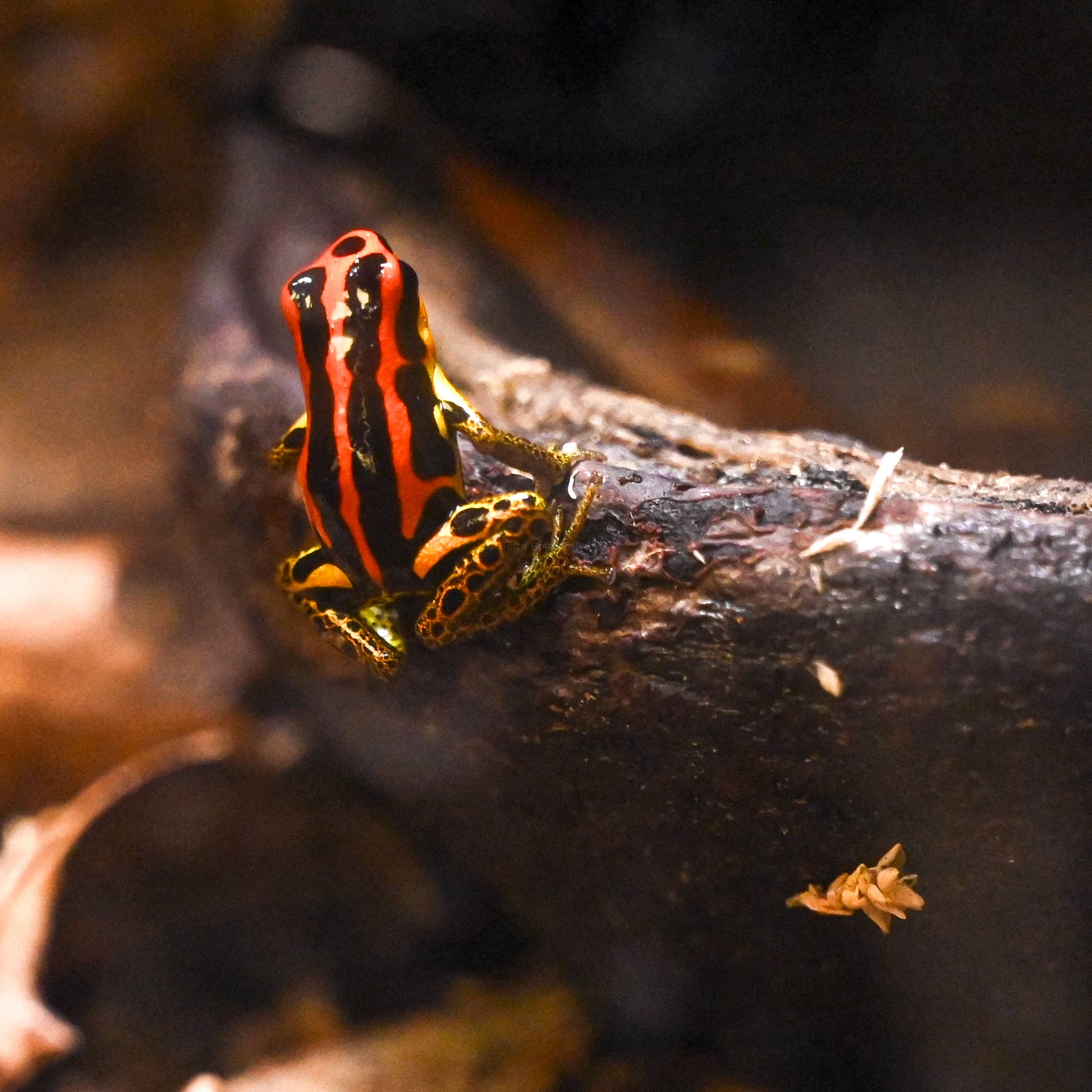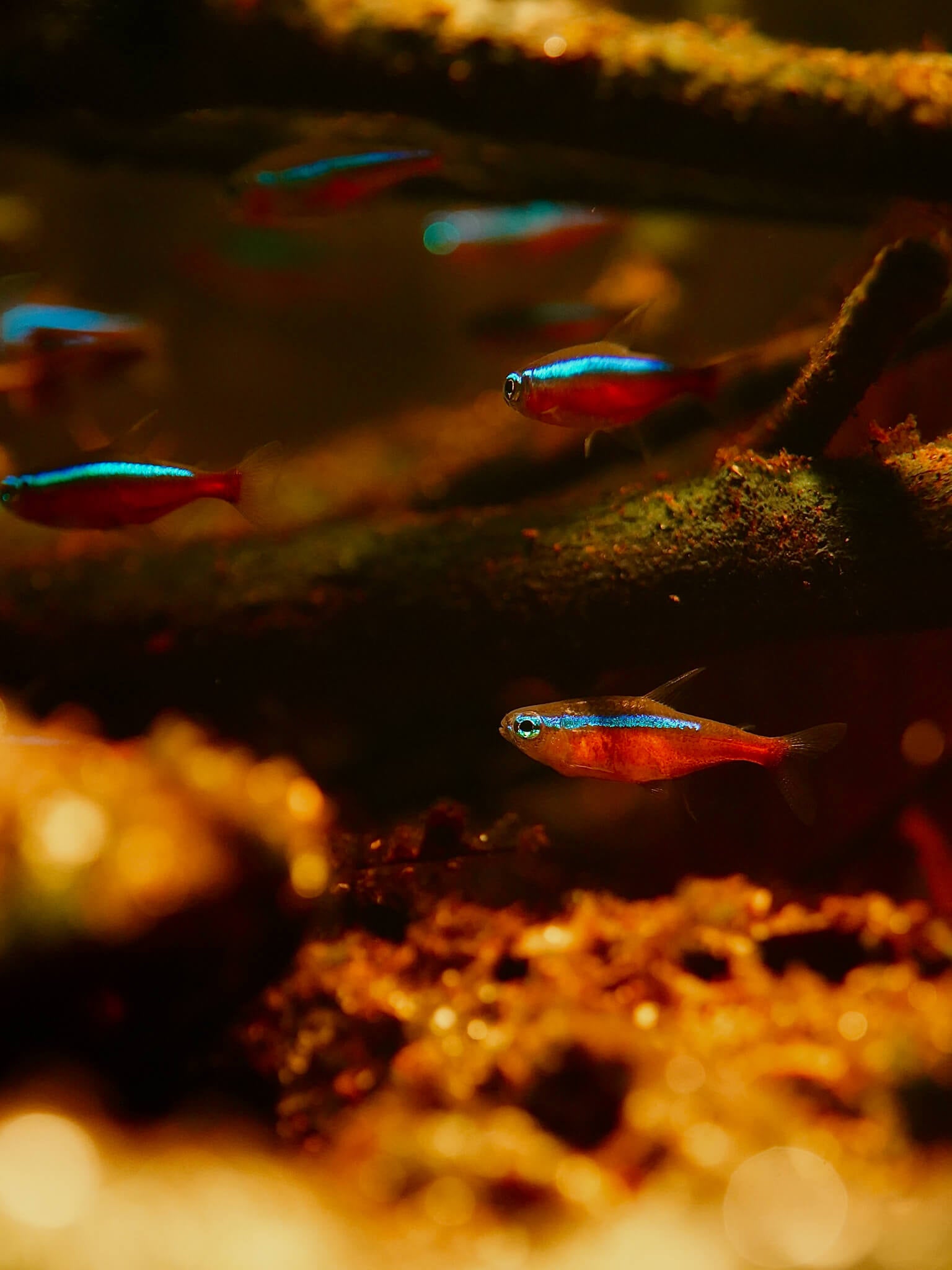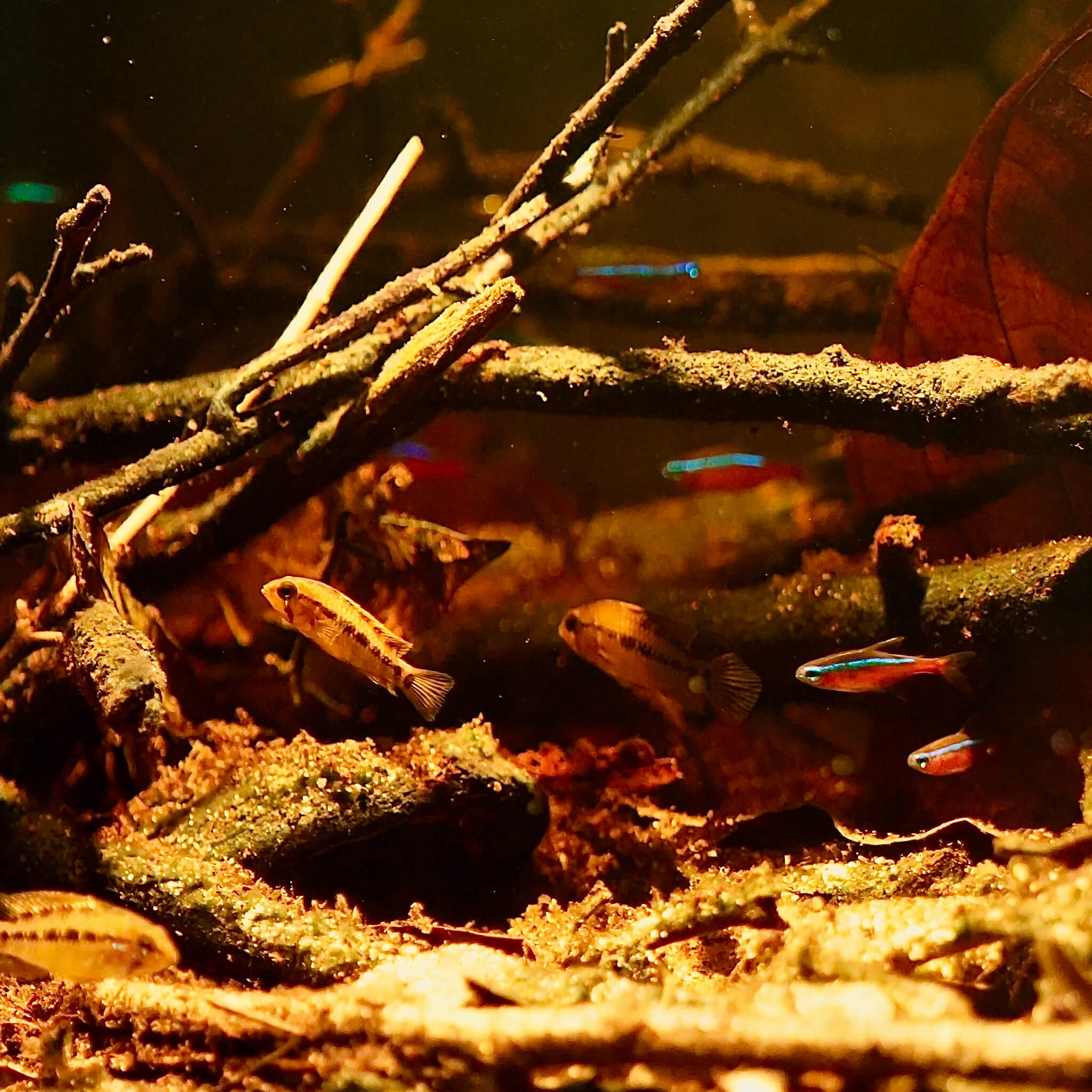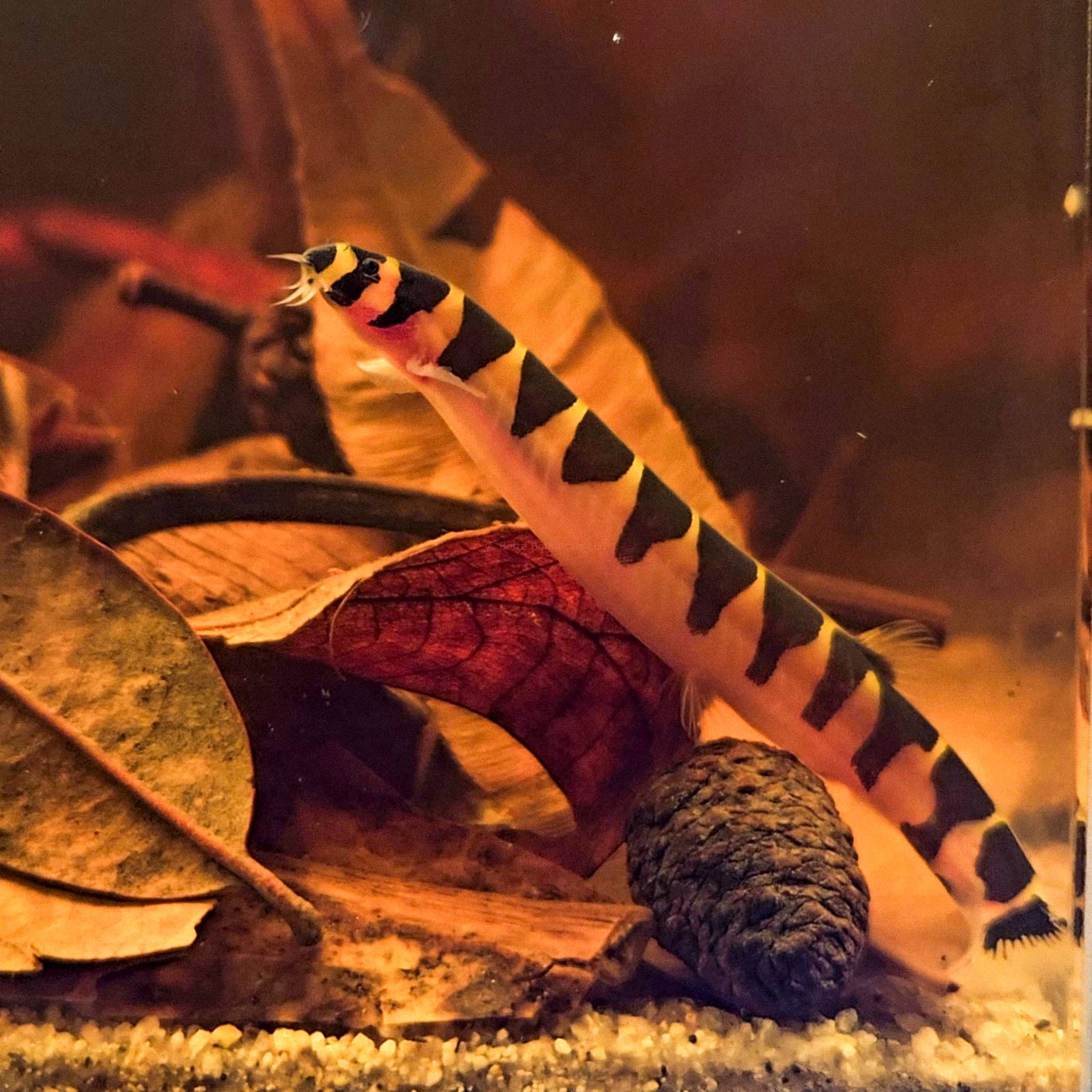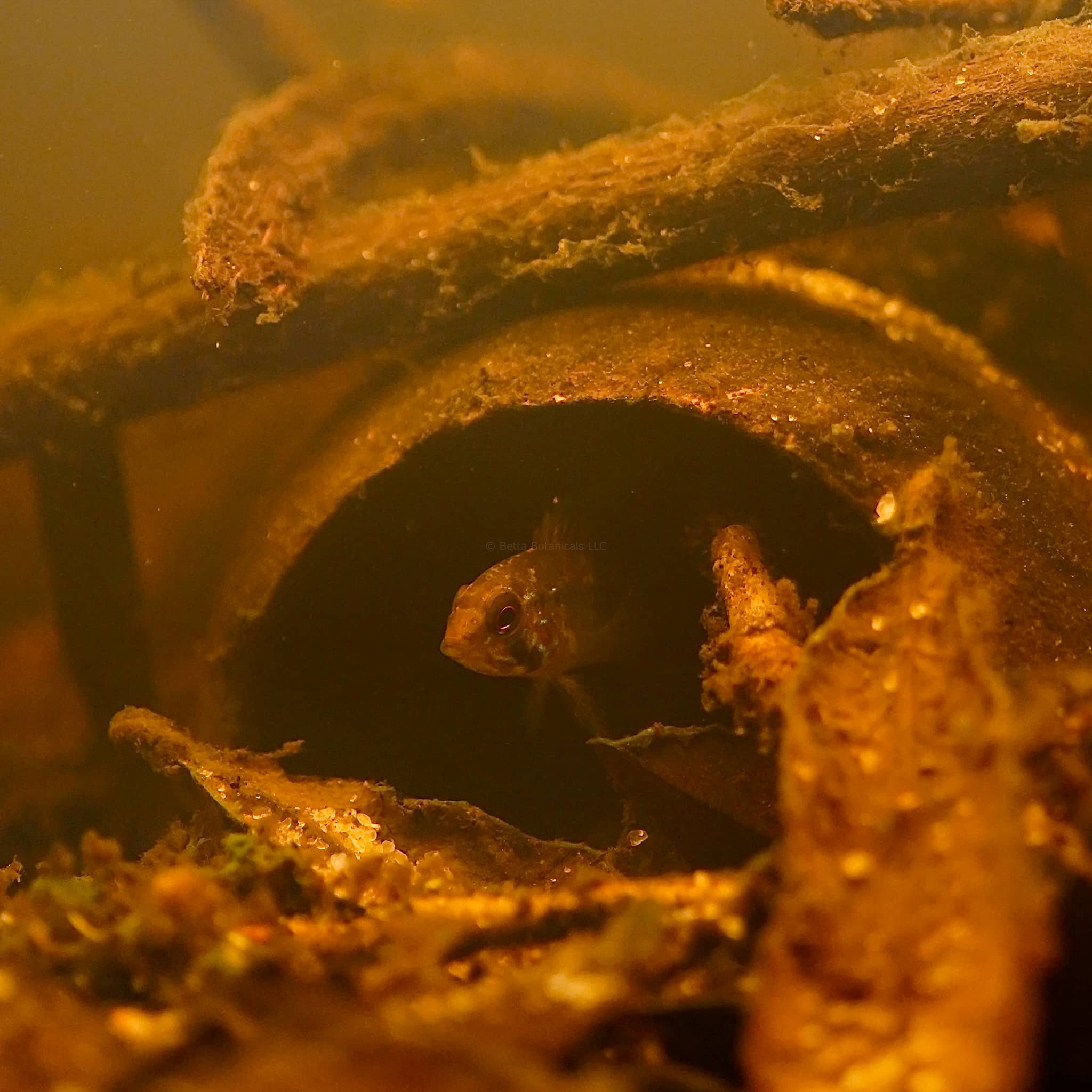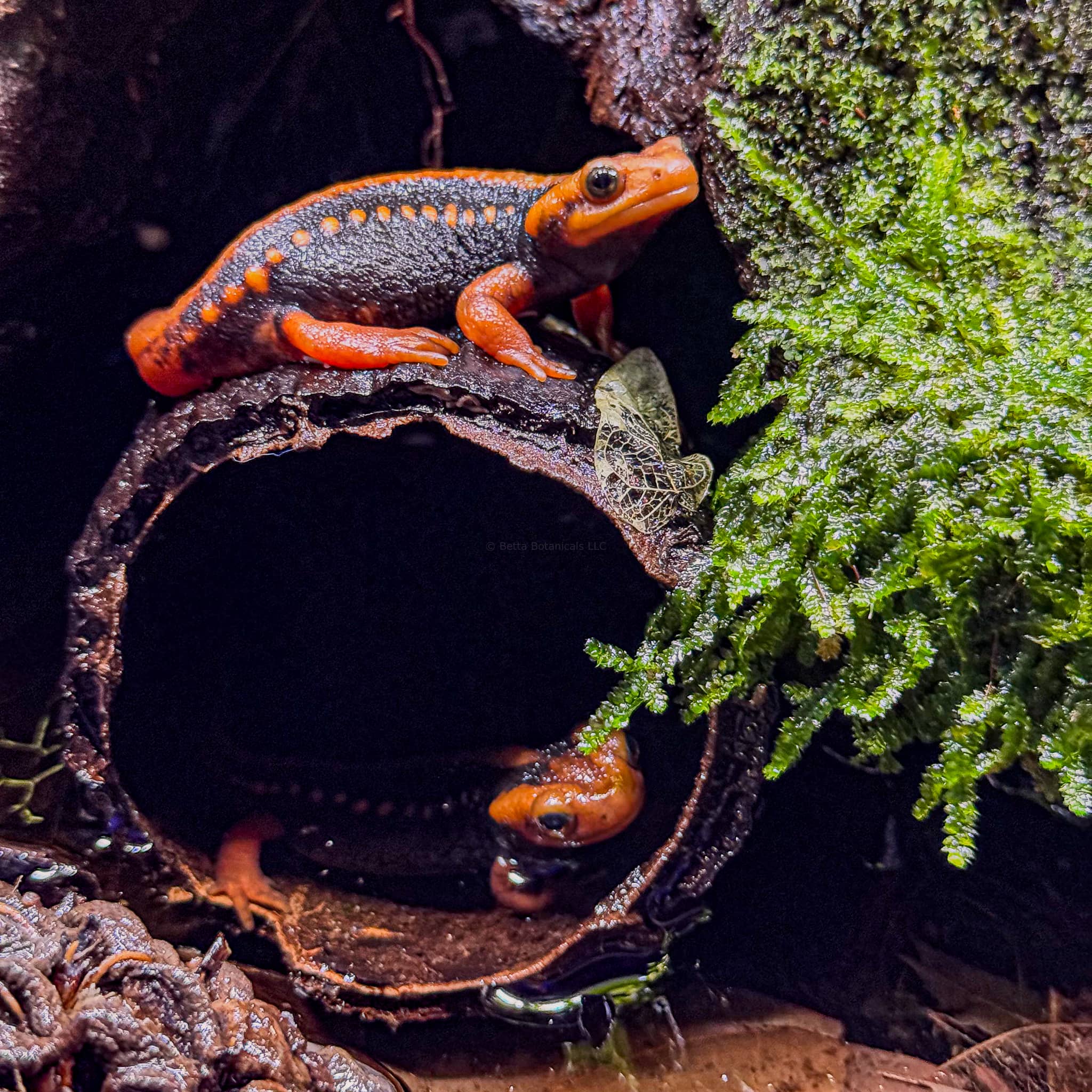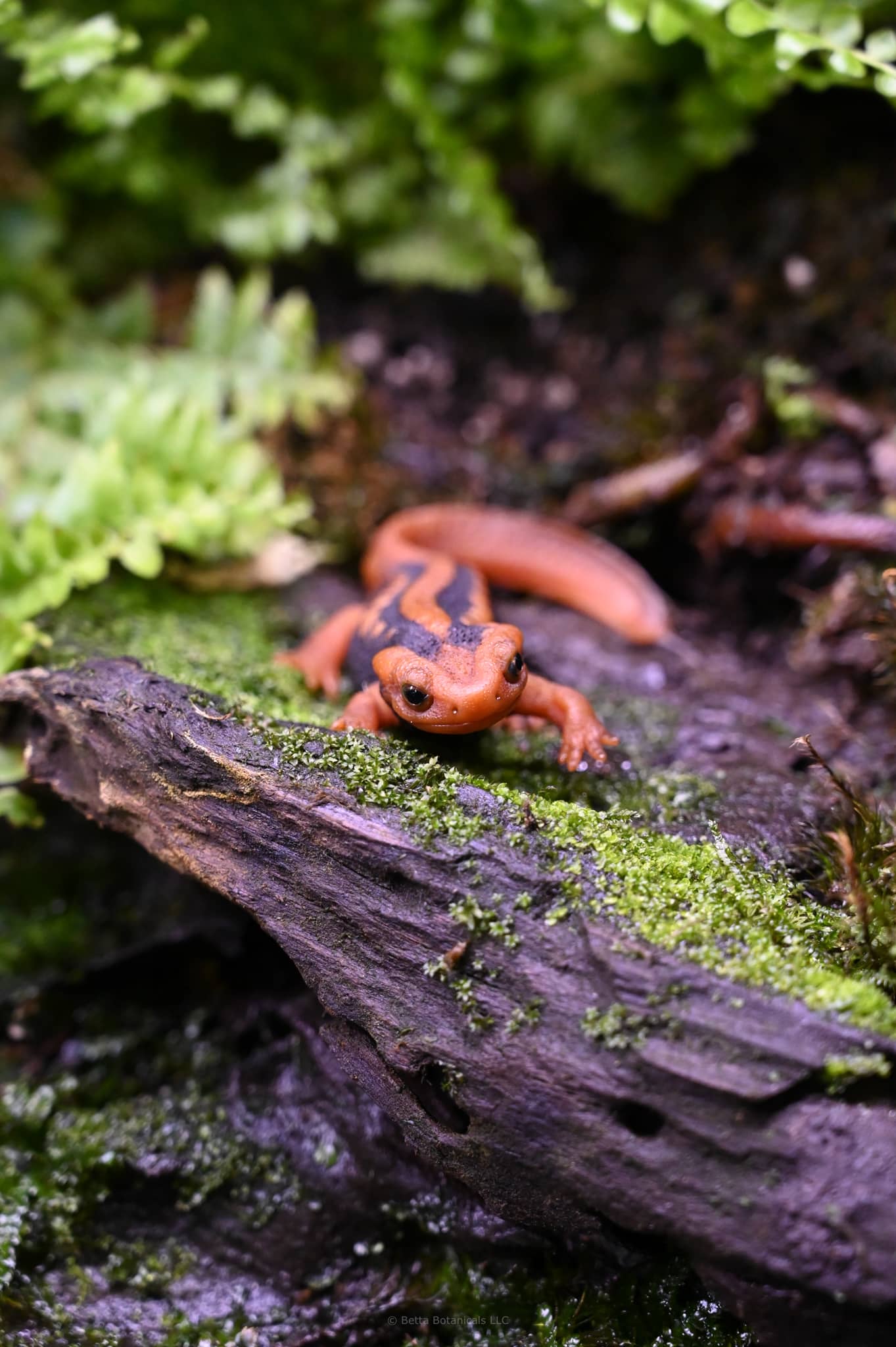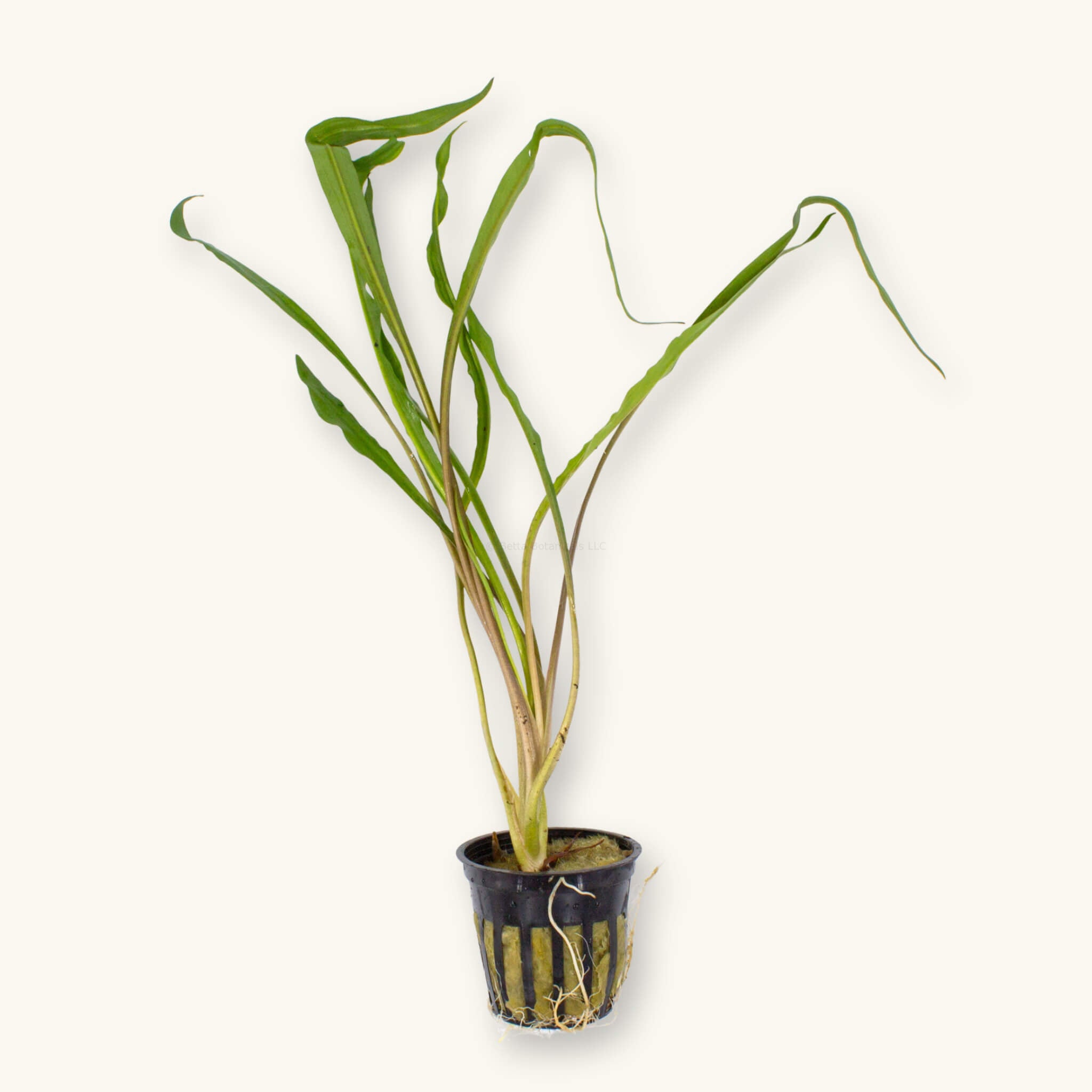
Cryptocoryne spiralis 'Tiger'
Cryptocoryne Spiralis ‘Tiger’
Scientific Name: Cryptocoryne spiralis ‘Tiger’
Common Name: Crypt Spiralis Tiger
Cryptocoryne spiralis ‘Tiger’ has long, narrow leaves that swirl upward in gentle curves and are marked by subtle tiger‑stripe patterns that run along the blade. Depending on light intensity and nutrient levels, the foliage can shift from olive green to bronze or even reddish tones. In nature, this Crypt grows submerged in the soft streambeds of India and Sri Lanka; it appreciates a nutrient‑rich substrate and dislikes being disturbed once planted. Mature plants can reach 14–16 inches in height and send runners beneath the leaf litter to form attractive clusters. Because it thrives in stable water parameters (pH ≈6.0–8.0 and temperatures around 65–75 °F), this plant is ideal for the Botanical Method Aquarium.
When first introduced, Crypts often “melt”, losing their emersed leaves as they adjust. Don’t be alarmed; new submerged leaves will sprout once the plant settles into its new, tannin‑rich environment. Use slow‑release root tabs if you are using inert substrates like sand, and avoid shifting the plant once it starts growing to prevent shock and melting. In time, the slender leaves sway in the current like grass, recreating natural environments.
Caring for Cryptocoryne Spiralis ‘Tiger’ in Blackwater Aquariums
- Care Level: Easy to moderate; hardy once established, but sensitive to sudden changes in water parameters.
- Light Requirements: Low to medium lighting; stronger light enhances reddish tones but may encourage algae.
- CO₂: Not required; supplemental CO₂ and fertilization will speed growth and deepen coloration.
- Tint Tolerance: Accepts low–medium tannin levels; bright colours show best in lightly tinted water.
- Native Habitat: India and Sri Lanka and often found along slow‑moving streams and rice paddies .
Note: Our Crypts are cultivated emersed, so they may shed most above‑water leaves before sprouting new submerged growth. As with all our botanicals, each specimen may carry snails or snail eggs, which we welcome for their beneficial grazing. Betta Botanicals partners with H2O Plants for live‑plant shipping; your plant will arrive separately from botanical orders and is covered under H2O Plants’ standard DOA policy.

Cryptocoryne spiralis 'Tiger'
Home is getting more natural
While the aesthetic appeal of botanicals and tinted water can be quite attractive to us, the recreation of nature to emulate water conditions, feeding patterns, spawning displays, and territory building are the true benefits botanicals provide to our critters.
Botanical FAQs
Compostable Packaging Promise
Our packaging is designed to return safely to the Earth, just like the botanicals inside. Every bag is BPA- and Phthalate-free, GMO-free, and contains no animal products. Each meets ASTM D6400 composting standards, ensuring it can fully break down in a home compost bin.
What are the Fluffy White Growths on my Botanicals?
That’s biofilm and fungi—what we call the “goo phase.” It’s one of the clearest signs that your aquarium is alive and functioning. These growths wax and wane naturally as botanicals decompose. They’re harmless, even beneficial, and will disappear on their own once microbial populations stabilize.
Will botanicals lower the pH of my water?
That depends entirely on your source water. In very soft or RODI water, botanicals can gradually lower pH as tannins and humic substances accumulate. In medium to hard tap water, buffering capacity often resists these shifts, and you may not notice much change. At Betta Botanicals HQ, our very hard water (350+ ppm) shows almost no pH change unless we use botanicals like Alder Cones or Macaranga Leaves.
When should I replace leaves or pods in my tank?
We recommend allowing botanicals to fully break down into detritus, since this fuels microbial life and enriches the substrate. You can remove them once they stop tinting the water, but you’ll lose some of their ecological benefits. Each time you add new botanicals, follow proper preparation and observe your livestock until you learn your aquarium’s rhythm.
Are your products just for bettas?
Nope. Our botanicals are safe for almost all aquariums, terrariums, vivariums, and paludariums. The only exceptions are goldfish and axolotls, which may ingest small pods like alder cones or casuarina cones. For those species, we recommend large leaves such as Indian Almond, Loquat, or Jackfruit.
What are Tannins?
Tannins are natural compounds released by leaves, seed pods, and bark as they decompose in water. They soften water, gently lower pH, and create the characteristic tea-stained tint found in blackwater habitats. But their role goes far beyond color—tannins fuel beneficial bacteria, fungi, and biofilms, which form the foundation of a healthy ecosystem. They also offer mild antifungal benefits and help reduce stress in fish by replicating the natural conditions they’ve evolved in. At their core, tannins are plant-derived antioxidants that connect your aquarium to the same processes at work in wild flooded forests and streams.




